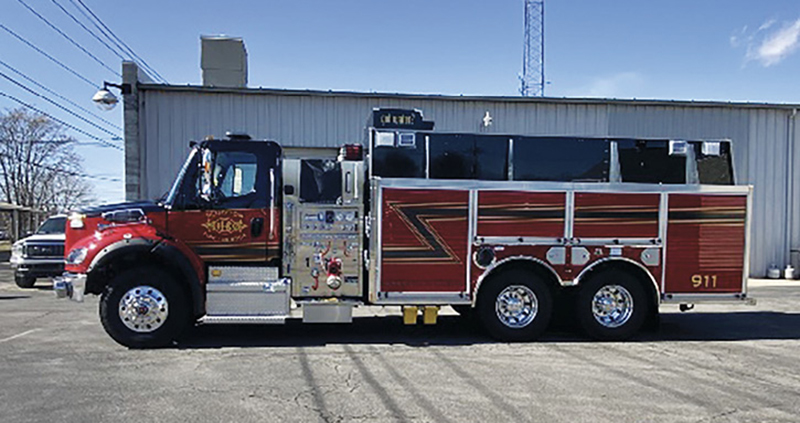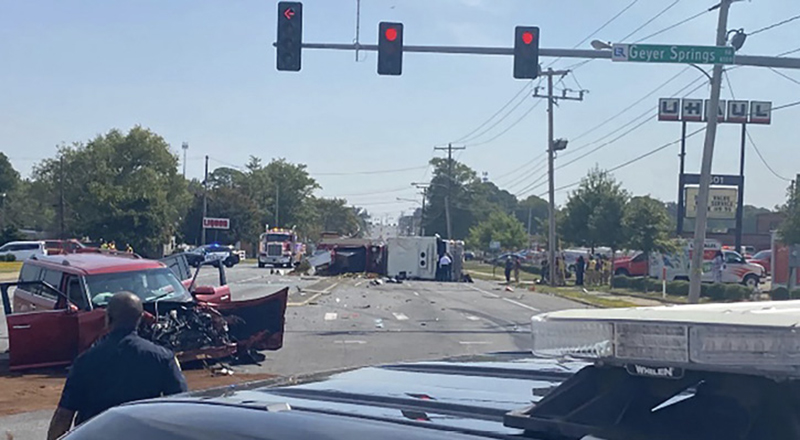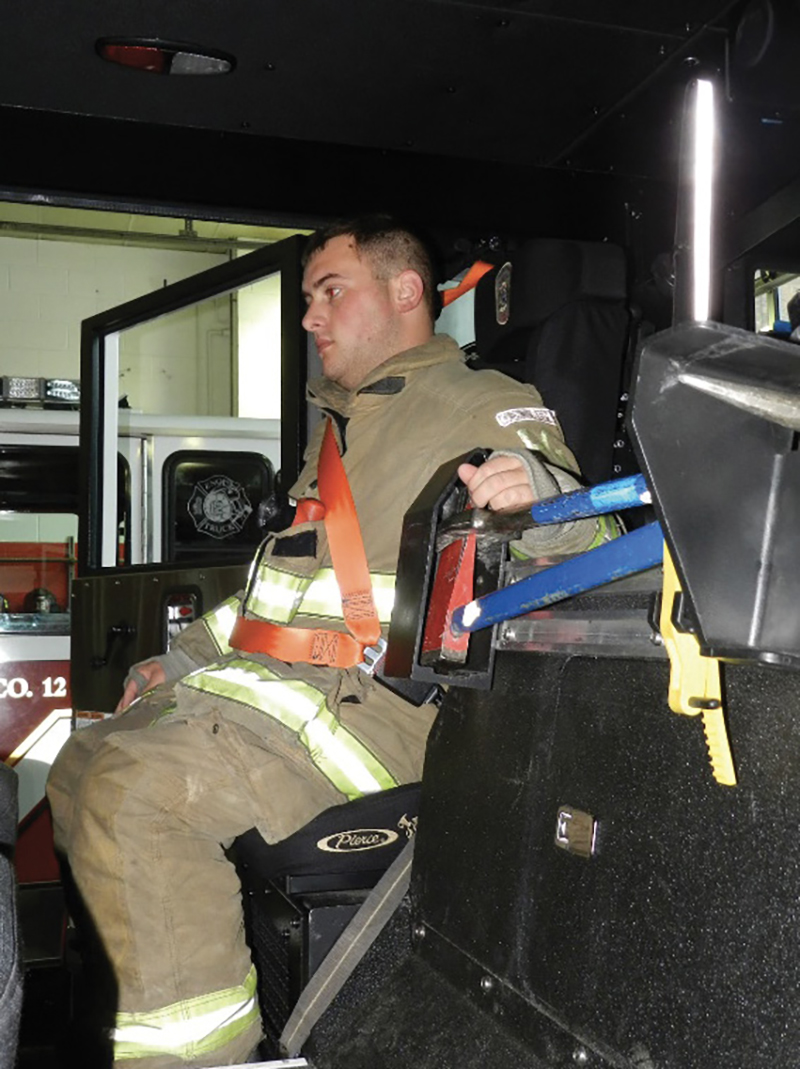By Tim Curran
Driving an emergency vehicle is one of the most important jobs in the fire department and carries arguably the most responsibility. If you pause to think about being an emergency vehicle driver and all that it entails, it is mind blowing.
Each time a piece of equipment leaves the bays, the driver is responsible for getting an apparatus that is worth more than most homes to and from an emergency incident safely. Whether your department refers to this position as driver, technician, engineer, or chauffeur, the individual behind the steering wheel must be able to multitask, have knowledge of the streets and running routes, and be proficient in both operating the apparatus and positioning (not parking) it. Most importantly, emergency vehicle drivers are responsible for getting the crew to and from these emergencies and back home to their families at the end of their shift.
According to the National Fire Protection Association (NFPA), vehicle crashes were the second leading cause of death among firefighters in 2022. Fourteen firefighters died in vehicle crashes, seven because of collisions with other vehicles, four by collisions with stationary objects, and three with overturned vehicles. In addition to those 14, eight deaths resulted from firefighters being struck by nondepartment vehicles. To keep you and your crew safe when driving an emergency vehicle, vigilance of your surroundings on an emergency scene and also about what is happening around the fire service pertaining to accidents is key. The best way to learn is through example and assessing how others did or should have dealt with motor vehicle incidents. Although not all accidents are avoidable, we must take the initiative to learn where we are getting into the most accidents, the most burdensome accident type encountered, and how the actions of the fire service are injuring and killing themselves and civilians—all to better prepare drivers of emergency vehicles for future responses.
INTERSECTION SAFETY
Intersections pose inherent dangers and account for the most accidents with fire apparatus worldwide. Why do intersections cause us the most problems? Several factors cause them to be so dangerous for responding emergency vehicles: blind intersections, siren noise being drowned out, multiple lanes to account for and clear, other responding emergency vehicles, etc.
The one that will get every driver is the assumption that others will see and hear you and that it gives you the “all clear” to take the intersection whether you have the green light or not. Operating in emergency mode while responding to a call does not automatically give you the right of way. Instead, as a driver, you are responsible for effectively using lights and sirens to ask other drivers on the road to yield to you and allow you to pass.
Making a left turn in intersections is also extremely hazardous, requiring attention to all lanes of travel in every direction in the intersection. Left turns are statistically so hazardous—National Highway Traffic Safety Administration (NHTSA) data say that 53% of all cross-traffic crashes include left turns—that companies like UPS map out routes that have their drivers avoid making them unless necessary. The fire service cannot write off making left turns, but personnel can study maps and make their own predetermined running routes that can avoid high-hazard intersections if necessary.
Allowing the intersection to “breathe” prior to entering a four-way stop or a red light can give you a few extra seconds to make sure you have complete control of the intersection. This provides extra seconds to make sure all other vehicles at the intersection see and hear you. How many times have you been in your personal car and had someone come out of nowhere because they sped up to catch the light? Working in a busy city, I use this technique regularly, whether I am driving to work in the morning or driving the ladder truck—I will always give the intersection the ability to breathe before entering.

1 A fully loaded tanker that was not weighed prior to delivery. The tanker, fully loaded, was almost 2,000 pounds overweight on the rear axles and more than 6,000 pounds underweight on the front. This causes steering issues because of the lack of weight and traction on the front and braking issues because of the extra weight on the rear axles. Make sure you “weigh before you pay” and every year thereafter to avoid the potential for a catastrophic accident like a rollover. (Photos courtesy of Emergency Vehicle Response unless otherwise noted.)

2 An engine was involved in a crash with another vehicle at an intersection and subsequently rolled over.
ROLLOVERS
Rollovers are some of the most devastating accidents an emergency vehicle can be involved in, and they are the most common cause of fatal firefighter crashes. Fire trucks, though designed to do incredible things, have a higher center of gravity that, if not driven properly, leads to easy rollover. According to the Federal Motor Carrier Safety Administration (FMCSA), truck driver negligence causes 78% of truck rollover accidents, with speeding as the most frequent issue. This, combined with inappropriate steering maneuvers, operating on roadways with soft shoulders, and weight shifts, leads to emergency vehicle rollovers.
A preventive measure that departments should take is to ensure each apparatus is weighed prior to delivery and every year after that, per NFPA 1900, Standard for Aircraft Rescue and Firefighting Vehicles, Automotive Fire Apparatus, Wildland Fire Apparatus, and Automotive Ambulances, and NFPA 1910, Standard for the Inspection, Maintenance, Refurbishment, Testing, and Retirement of In-Service Emergency Vehicles and Marine Firefighting Vessels, respectively, to make sure the rigs are properly balanced. An overweight vehicle can lead to an unbalanced load over each axle that affects steering, turning, and braking.
Speed control is the easiest way to avoid putting yourself in a rollover situation. Slowing down and understanding that your vehicle weighs more and has a higher center of gravity are crucial—we constantly encounter accidents where the driver enters a curve going too fast and continues too far into the curve. That causes loss of the rear officer side tires into the soft shoulder. If the vehicle can make it out of the turn without rolling over, the vehicle driver employs inappropriate steering maneuvers to regain traction on the road with all the tires. That action often creates an overcorrection, causing the vehicle to either leave the roadway on the other side and roll over or go into a skid that could also result in a rollover.
Avoiding an accident such as a rollover starts with controlling your speed and knowing how your vehicle handles. Understand how the specifications of your vehicle will contribute to your ability to drive and handle it as well—such as knowing if you have an auxiliary braking system to slow you down and how that sudden change in speed will affect the rig. Also, with certain manufacturers, you may have some type of rollover protection designed into your vehicle that will automatically cut out the accelerator and apply the braking system if the system senses the dynamics for a rollover. Driver training should start with familiarization of all aspects of a vehicle’s design as well as specifications such as height, width, weight, braking systems, etc. before ever driving it out of the bays.
SEAT BELTS
It is a sad reality in 2024 that we still must remind firefighters (and civilians for that matter) to put on their seat belts. What is it that makes us think we do not have to wear our seat belts in a fire truck? If you were to research National Institute for Occupational Safety and Health (NIOSH) reports for line-of-duty deaths from vehicle accidents in the fire service, there is a common thread of contributing factors to what caused the accident and key recommendations to hopefully avoid another one. Overwhelmingly, these reports indicate not wearing a seat belt is a contributing factor to the death of the driver and other occupants of the vehicles.

3 A College Park firefighter uses a seat belt. [Photo courtesy of the College Park (MD) Volunteer Fire Department.]
When I teach around the country, I like to ask drivers and officers, “Do you have children, and do you make sure they have their seat belts on in the car no matter who is driving them?” Usually, I get a funny look and an immediate answer of yes, of course, that is an obvious answer. I usually follow up by asking, “Do you make sure your firefighters are wearing their seat belts every time they go out the door in the rig?” Again, I get that funny look, but often followed with silence, then excuses. My last question is, “What is the difference between your children and the men and women you work with?” As an officer and driver, you are responsible for the safety and well-being of your crew. Leaders should foster a culture in their company and department that not wearing a seat belt is unacceptable, and those who decide not to wear it will be held accountable. In a job full of uncertainties, one of the easiest things we can do to help keep ourselves and others safe is to take the five seconds required to put our seat belts on.
Make seat belt safety a standard in your culture and a must-discuss in all of your driver training.
VEHICLE SPECIFICATION AND INEXPERIENCED DRIVERS
Manufacturers continue to design fire trucks to be bigger and, in turn, heavier. Departments must be diligent about reviewing their vehicle specifications with respect to their specific needs and the impacts of those vehicle build decisions. Do you need to have a top-mount pump that will add 18 to 24 inches of vehicle length, adding to your wheelbase and making it harder to turn? Does your town need an engine with a 1,000- or 1,500-gallon water tank when there are hydrants on every street corner, adding unnecessary weight to your vehicle and making it harder to stop? These are the things you need to consider when it comes time to design apparatus for the needs of your town, because in most cases this will be your rig for the next 20 to 25 years.
In many situations, because of budget constraints, departments are designing new rigs to be jacks of all trades. That may sound good when you pitch the idea to your local city council to gain approval to purchase a new fire truck, but the practical reality means that the apparatus you end up with at your firehouse could prove difficult to drive or position, increasing accident risk. Have you ever thought about who is going to be driving the new rig after delivery? Driver training is imperative when planning for and receiving a new unit for all drivers. Comfort and regular exposure with a vehicle and its intricacies help reduce accidents.
One big focus every fire and EMS department should have across the country is to keep up on current events throughout the fire service. Accidents happen in a variety of ways, but no matter how they happen, one constant is that we are injuring ourselves and causing damage to our fleets. As a driver and leader in a department, you should ask yourself every day, “Could this happen here?” and, if so, “How can we prevent it?”
As you move forward with future driver training programs, do a deep dive into the most frequent causes and indicators of an accident—including but certainly not limited to intersection safety, seat belt practices, rollovers, vehicle specifications, and inexperienced drivers. Focus on areas where you can implement specific drills within your department. Look into neighboring jurisdictions and see what they are doing to better prepare their drivers. And, look at outside agencies that can come in and train your department and provide a structured solution-based program to lead your department toward a safer driving environment.
TIM CURRAN is an emergency vehicle driver (EVD) with the Baltimore City (MD) Fire Department and a life member of the College Park (MD) Volunteer Fire Department.

